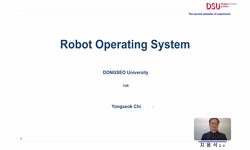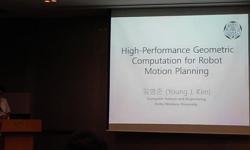This study aims to understand the dance work in which humans and machines coexist within the historical context of creating automata, moving dolls. Accordingly, the purpose of this study is to explore the two-sided meaning of such dance works by payin...
http://chineseinput.net/에서 pinyin(병음)방식으로 중국어를 변환할 수 있습니다.
변환된 중국어를 복사하여 사용하시면 됩니다.
- 中文 을 입력하시려면 zhongwen을 입력하시고 space를누르시면됩니다.
- 北京 을 입력하시려면 beijing을 입력하시고 space를 누르시면 됩니다.

인간과 기계가 공존하는 춤 작품의 양가적(兩價的) 의미 탐색: 인형에서 로봇으로 변천사를 중심으로 = A study on the ambivalent meaning of dance works in which humans and machines coexist: Focusing on the transition from automata to robots
한글로보기https://www.riss.kr/link?id=A108371955
- 저자
- 발행기관
- 학술지명
- 권호사항
-
발행연도
2022
-
작성언어
-
- 주제어
-
KDC
600
-
등재정보
KCI등재
-
자료형태
학술저널
- 발행기관 URL
-
수록면
43-67(25쪽)
- DOI식별코드
- 제공처
-
0
상세조회 -
0
다운로드
부가정보
다국어 초록 (Multilingual Abstract)
This study aims to understand the dance work in which humans and machines coexist within the historical context of creating automata, moving dolls. Accordingly, the purpose of this study is to explore the two-sided meaning of such dance works by paying attention to how dolls and robots, digital sensors, and artificial intelligence coexist with humans as self-moving machines. In this study, I analyzed concrete works by dividing them into three types of coexistence: dolls, robots, and bodies directly combined with machines.
As a result of this study, first, interest in moving dolls was shown to express ‘mixed identity’ through the dancer’s body that reproduces the movements of imaginary dolls in dance. Second, the appearance of actual robots was realized in the direction of pursuing mutual emotional communication by resembling human ‘inside’ rather than creating human- like outside in dance. Third, the body directly connected to the machine changes not only the appearance but also the innate ability of the body to have ‘ambivalent emotions’ of fear and curiosity.
In all three modes of coexistence examined in this study, post-humanism and human communication methods interact with each other with different faces. In the end, it was found that in the dance work in which humans and machines coexist, both sides were presented in harmony with the post-humanistic elements that give interesting, fun, and unfamiliar shock in numerous ways, and the human elements where our daily imagination and emotions meet.
동일학술지(권/호) 다른 논문
-
통합 마케팅 커뮤니케이션(IMC)과 성인발레 브랜드의 구조적 관계
- 대한무용학회
- 강태영 ( Tae Yung Kang )
- 2022
- KCI등재
-
한국 스트릿댄스에서의 여성문화 연구 -걸스힙합, 비걸을 중심으로-
- 대한무용학회
- 김주희 ( Joo Hee Kim )
- 2022
- KCI등재
-
중학교 무용수업에서 지각된 교수역량과 과제수행간의 관계에서 그릿(Grit)의 매개효과
- 대한무용학회
- 백누리 ( Nu Ri Baik )
- 2022
- KCI등재
-
탄성밴드 운동프로그램이 발목 불안성을 가진 발레전공 대학생의 균형성에 미치는 영향 연구
- 대한무용학회
- 신여정 ( Yeo-Jung Shin )
- 2022
- KCI등재




 KCI
KCI KISS
KISS





